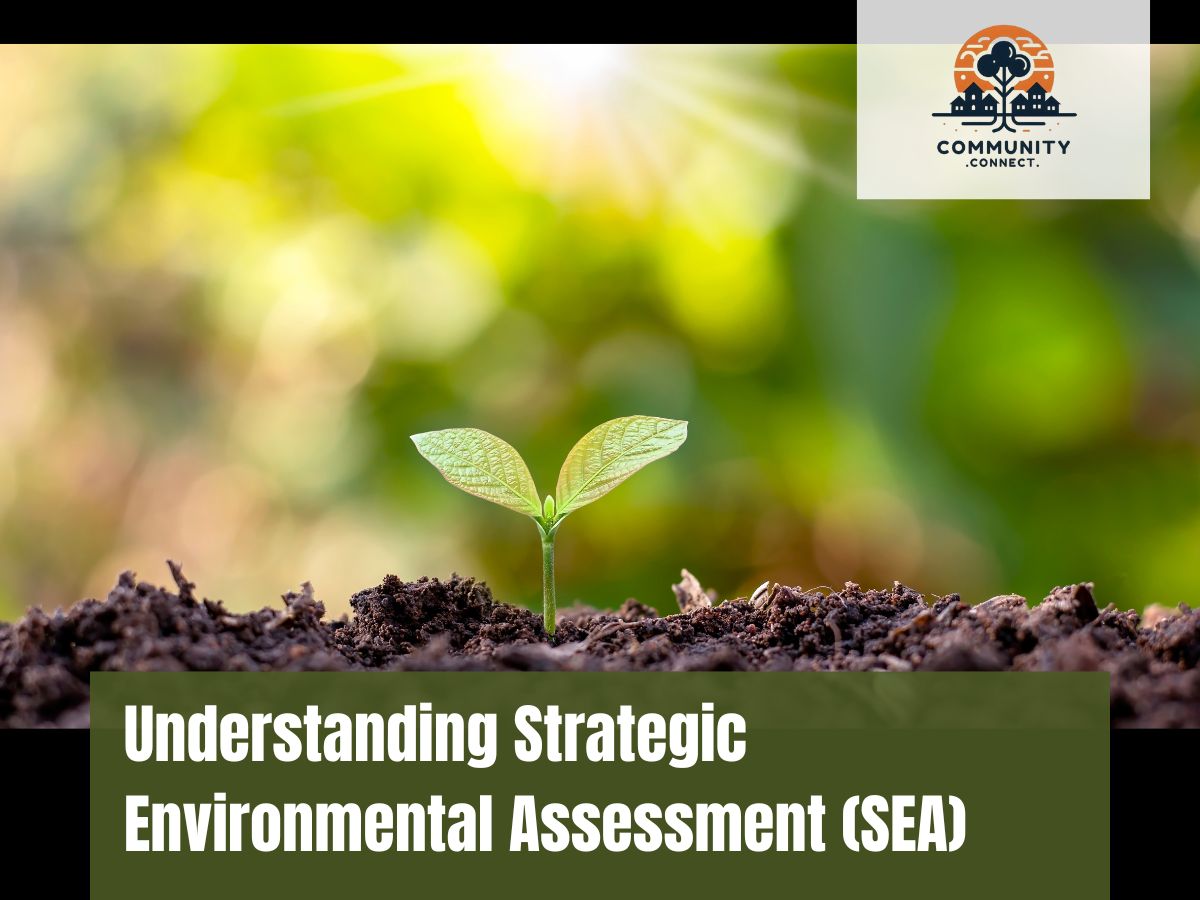In an era marked by rapid development, population growth, and climate change, the need for sustainability in planning and policymaking has never been more critical. Kenya, like many countries globally, faces the complex challenge of balancing economic growth with environmental protection. One powerful tool to aid in this balancing act is Strategic Environmental Assessment (SEA).
What is Strategic Environmental Assessment (SEA)?
Strategic Environmental Assessment (SEA) is a systematic decision-support process that ensures environmental and sustainability aspects are considered in policies, plans, and programmes (PPPs) before they are approved or implemented. Unlike Environmental Impact Assessments (EIAs), which focus on individual projects, SEA evaluates the potential environmental impacts of broader initiatives, like infrastructure plans, urban development strategies, and energy policies.
SEA helps to integrate environmental considerations into the early stages of decision-making. This proactive approach allows for more effective and sustainable outcomes by identifying potential environmental consequences and alternative development paths before irreversible commitments are made.
The Legal and Policy Framework for SEA in Kenya
In Kenya, SEA is legally embedded in the Environmental Management and Coordination Act (EMCA), 1999, which was revised in 2015. The Act mandates that all policies, plans, and programmes that may have significant environmental effects undergo a Strategic Environmental Assessment.
The National Environment Management Authority (NEMA) is the key regulatory body responsible for overseeing SEA processes in the country. NEMA has also developed guidelines and manuals to streamline the SEA process, ensuring that assessments are comprehensive, participatory, and aligned with national development goals.
The Constitution of Kenya, 2010, also reinforces the need for sustainable development and public participation, both of which are central tenets of SEA. Article 42 grants every person the right to a clean and healthy environment, while Article 69 obligates the state to ensure sustainable exploitation, utilisation, and management of natural resources.
The Importance of SEA in Kenya
- Proactive Environmental Planning: SEA allows planners and decision-makers to anticipate environmental impacts early in the planning process. This early warning system helps avoid costly mistakes and ensures that development aligns with Kenya’s long-term sustainability goals.
- Public Participation and Transparency: SEA processes in Kenya emphasize stakeholder engagement, ensuring that local communities, civil society organizations, and other stakeholders have a say in how development plans are formulated and implemented.
- Integrated Decision Making: SEA fosters collaboration between various sectors and levels of government. This is particularly important in Kenya, where devolution has transferred significant planning powers to county governments.
- Enhancing Policy Coherence: By evaluating the environmental implications of policies and plans, SEA helps to harmonize development initiatives with environmental conservation efforts. This ensures that economic, social, and environmental objectives are not pursued in isolation.
- Meeting International Commitments: SEA helps Kenya meet international environmental agreements such as the United Nations Sustainable Development Goals (SDGs) and the Paris Agreement on climate change.
SEA in Practice: Real-World Applications in Kenya
Several successful SEA applications have been carried out in Kenya, demonstrating its value in real-world contexts:
- Lamu Port-South Sudan-Ethiopia-Transport (LAPSSET) Corridor: One of the largest infrastructure projects in East Africa, the LAPSSET Corridor underwent an SEA to assess its potential environmental and social impacts across multiple counties. This helped to identify sensitive ecosystems, inform routing decisions, and recommend mitigation measures.
- County Integrated Development Plans (CIDPs): Counties are required to prepare CIDPs every five years, outlining their development priorities. SEA has been instrumental in evaluating these plans to ensure they are environmentally sound and sustainable.
- Renewable Energy Planning: Kenya has made strides in renewable energy, especially in wind and geothermal power. SEA has played a role in guiding the location and development of these projects to minimize ecological disruption.
Challenges in Implementing SEA in Kenya
Despite its potential, SEA in Kenya faces several challenges:
- Limited Capacity: There is a shortage of trained professionals and institutional capacity to carry out comprehensive SEAs, especially at the county level.
- Inadequate Public Awareness: Many stakeholders, including community members and local leaders, are not fully aware of what SEA entails and how they can participate meaningfully.
- Resource Constraints: SEA processes can be time-consuming and costly. Many planning authorities struggle to allocate sufficient resources for thorough assessments.
- Weak Enforcement: Although SEA is a legal requirement, enforcement remains inconsistent. Some PPPs proceed without proper assessment, undermining the integrity of the process.
- Data Gaps: Effective SEA relies on accurate and up-to-date environmental data, which is often lacking or difficult to access in Kenya.
Opportunities and the Way Forward
To maximize the potential of SEA in promoting sustainable development in Kenya, several steps can be taken:
- Capacity Building: Invest in training and institutional strengthening to enhance the ability of national and county governments to conduct SEAs.
- Public Education and Engagement: Raise awareness about SEA among the public and stakeholders to foster greater participation and accountability.
- Digital Tools and Data Systems: Develop centralized databases and GIS tools to support data collection, analysis, and sharing for SEA processes.
- Stronger Legislation and Enforcement: Strengthen the legal framework and ensure that NEMA has the resources and authority to enforce SEA requirements effectively.
- Regional Collaboration: Encourage cross-border collaboration on SEA for projects that span multiple countries, such as transboundary water resources and infrastructure corridors.
Conclusion
Strategic Environmental Assessment is a powerful tool for guiding Kenya’s development in a sustainable and inclusive direction. By embedding environmental considerations into the heart of policy and planning processes, SEA ensures that economic growth does not come at the expense of the environment or community well-being. While challenges remain, with the right investments and political will, SEA can play a pivotal role in shaping a greener, more resilient future for Kenya.

Leave a Reply